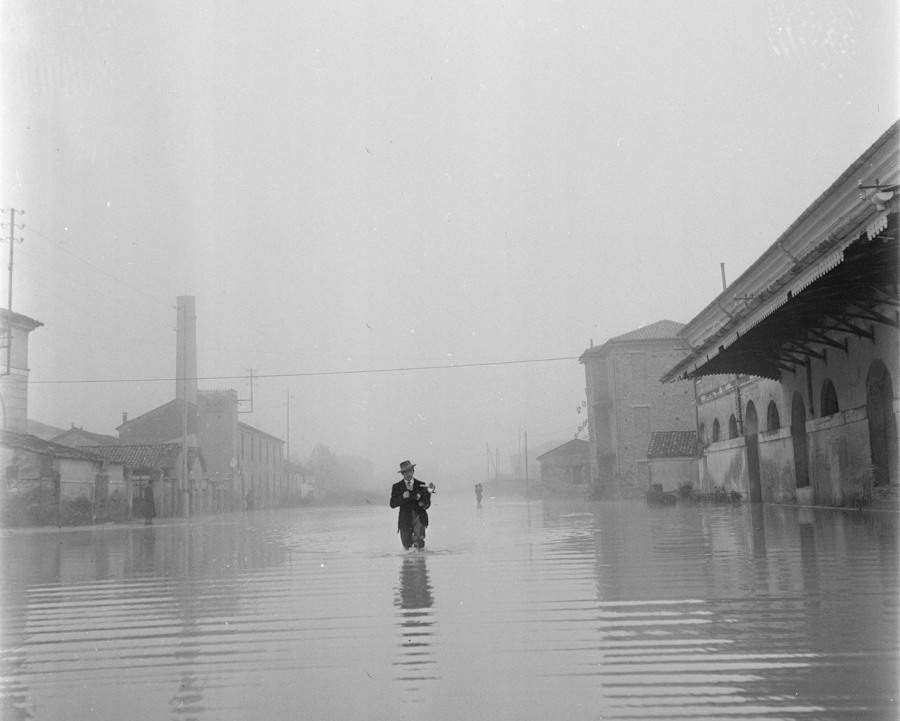70 years after the Great Flood: a photo exhibition in Rovigo
Until January 30, 2022, Palazzo Roncale in Rovigo hosts the photography exhibition 70 Years Later. The Great Flood, curated by Francesco Jori, with Alessia Vedova and Sergio Campagnolo, and promoted by the Fondazione Cassa di Risparmio di Padova e Rovigo.
“Remembering today, seventy years later, that event is a social duty,” said Foundation President Gilberto Muraro. “Not so much, or not only, to retrace a chronicle that became history, but to understand its genesis, what over time led to those terrible days. To reflect, in the present day, on the eternal and unfulfilled urgency to respect rivers and the environment. And it is also an opportunity to understand, as direct witnesses of the event become rarer and rarer, what has remained of it in the personal and social DNA of Polesanians, those who continued to live in Polesine and Polesanians forced to be born and grow up elsewhere. For whom the Great Flood is an important piece of family history, still present but fatally destined to evaporate generation after generation.”
“This exhibition,” Muraro continued, “aims above all to focus on how that tragedy affects the physical, social and economic fabric of Polesine today. Trying to investigate what, besides memory, pain, personal and social tragedies, derives today, 70 years later, from that Flood. Which certainly brought a territory to a standstill but which proudly, thanks in part to state provision for distressed areas and the help of many Italians and others, had the strength to recover, even though it remained a stranger to the industrial explosion that changed the face of other provinces in the Veneto from the 1960s onward.”
“In the absence of a real development of the industrial sector,” pointed out exhibition curator Francesco Jori, “Polesine focused on the agricultural one, upgrading and redeveloping it, from rice to horticulture. A territory that has made an abandoned and enemy Delta, a land of malaria first and pellagra later, one of the most coveted and important wetlands in Europe, recognized by UNESCO as a Biosphere Heritage Site. Which has also been able to qualify the heritage of its sea, with mussel farming and fish farming of excellence. Which was driven by that tragedy to respect, protect and enhance its environment. And that it has begun again to look at globalization, remembering that for a millennium, when Adria gave its name to a sea, it was one of the meeting ganglia of the world’s trade networks. These seventy years have certainly not lacked distortions and errors, a physiological result of the times and the legitimate need for work and prosperity. But as a whole this territory today constitutes an environmental and human heritage elsewhere lost. A heritage that today allows Polesine to continue planning for a quality future.”
Image: A photojournalist with his camera walks through water during a flood in the Polesine countryside; behind him in the distance a cameraman with a camera, Nov. 17, 1951 ©Archivio Publifoto Intesa Sanpaolo.
 |
| 70 years after the Great Flood: a photo exhibition in Rovigo |
Warning: the translation into English of the original Italian article was created using automatic tools. We undertake to review all articles, but we do not guarantee the total absence of inaccuracies in the translation due to the program. You can find the original by clicking on the ITA button. If you find any mistake,please contact us.




























